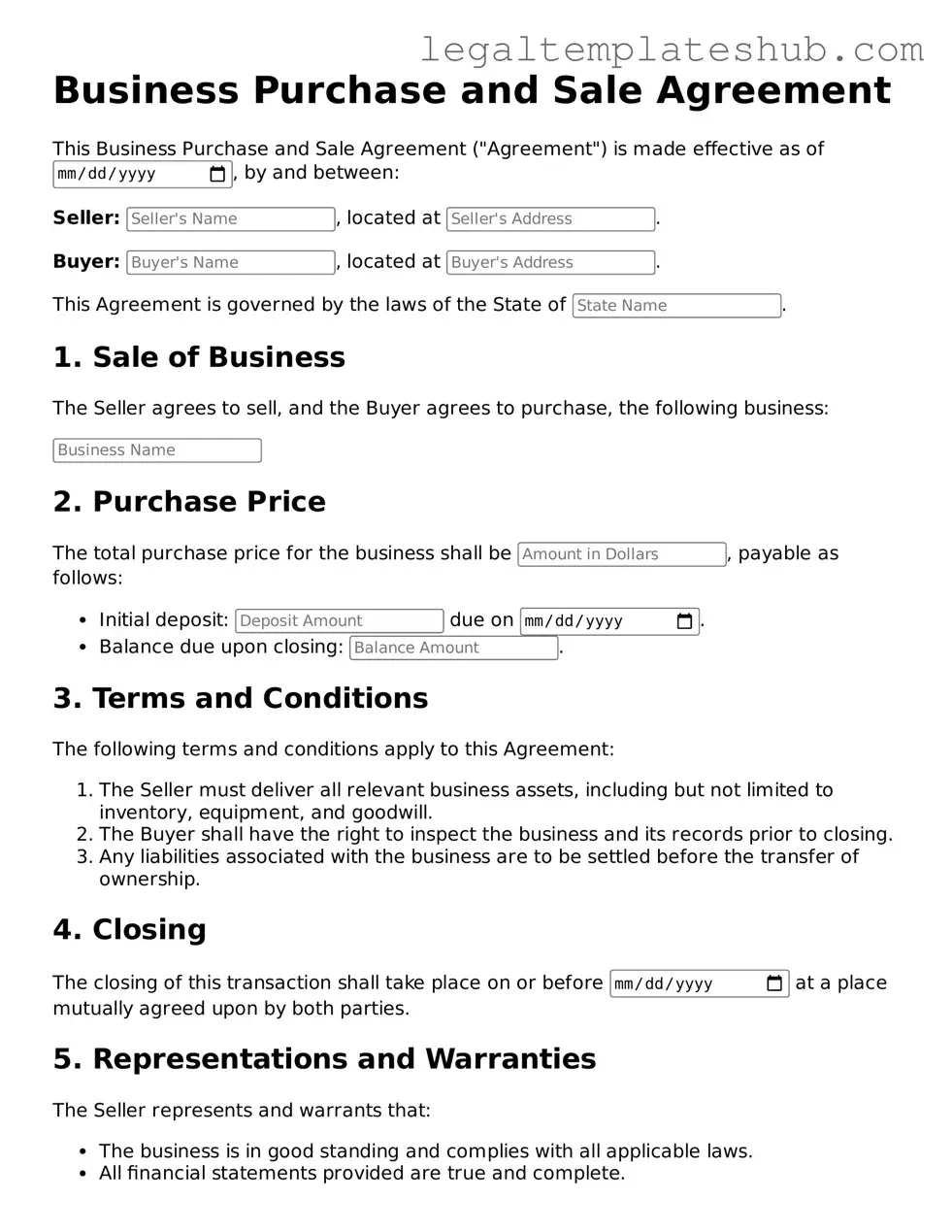Instructions on Filling in Business Purchase and Sale Agreement
Filling out the Business Purchase and Sale Agreement form is an important step in the process of buying or selling a business. This form outlines the terms and conditions of the transaction, ensuring that both parties are clear on their rights and responsibilities. Follow these steps to complete the form accurately.
- Gather necessary information: Collect all relevant details about the business, including its name, address, and any identifying numbers.
- Identify the parties involved: Clearly state the names and addresses of both the buyer and the seller.
- Describe the business: Provide a brief description of the business being sold, including its operations, assets, and liabilities.
- Specify the purchase price: Clearly outline the total purchase price and any payment terms, such as deposits or installment payments.
- Outline contingencies: Include any conditions that must be met for the sale to proceed, such as financing or inspections.
- Detail the closing process: Specify the date and location of the closing, as well as any required documentation.
- Include representations and warranties: State any guarantees made by the seller regarding the business’s condition or operations.
- Sign and date the agreement: Ensure that both parties sign and date the document to make it legally binding.
Once the form is completed, both parties should review it carefully to ensure all information is accurate and complete. After that, it’s advisable to keep a copy for your records and proceed with the next steps in the transaction.
